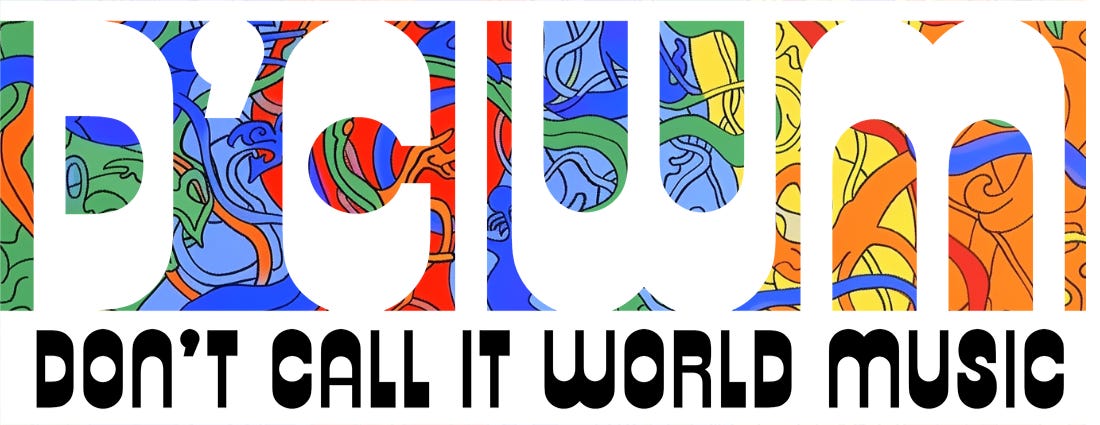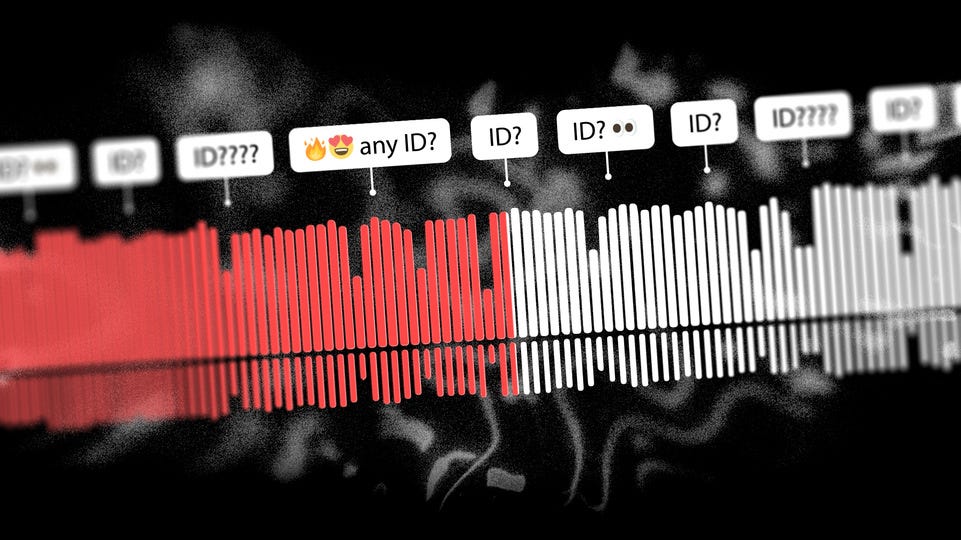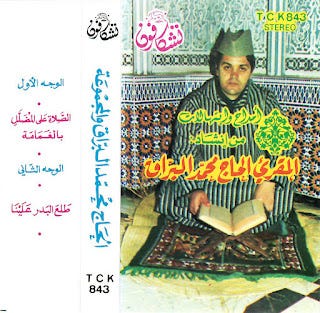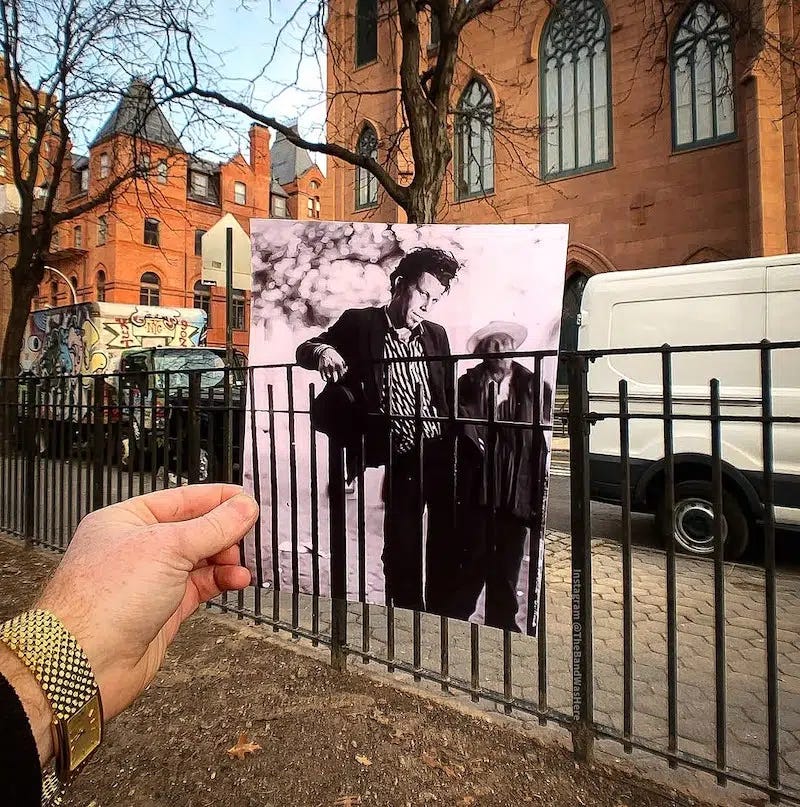Thanks to our new subscribers ! :)
Don’t Call It World Music is a free, independent and curated roundup of music news. Each weekly edition of our newsletter features a handpicked selection of articles related to every kind of music, offering insights into genres from every corner of the globe.
Our mission is to provide visibility to a wide array of issues, musical traditions, artists and genres that are underrepresented or overlooked in mainstream media, generate curiosity and drive traffic to original sources, particularly alternative and independent platforms.
EURweb celebrates Don Cornelius , best known for creating, hosting, and producing the influential music and dance show Soul Train, from 1970 to 1993.
Synthtopia announces the finalists in the 2025 Guthman Musical Instrument Competition, which celebrates creative engineers who are pushing the boundaries of instrument design with instruments.
The Mulatar combines elements of slide guitar, harp, and percussion into a single instrument. Moving bridges allow musicians to adjust notes freely, while the harp section supports quick retuning, and the body functions as a drum.
The Dinosaur Choir recreates the vocalizations of extinct dinosaurs using CT scans, 3D fabrication, and physically-based modeling synthesis.
Musicians produce sound by blowing into a mouthpiece, which drives a computational voice box and resonates through a 3D-printed reconstruction of a dinosaur’s skull and nasal passages.
A thesis by Emeline Avignon presents an ethnomusicological analysis of the Zamrock movement in Zambia between 1970 and the mid-1980s. The study examines how Zamrock artists constructed urban youth masculinity in the context of Zambia's colonial history and post-independence period.
Zamrock?
Zamrock is a musical genre that emerged in Zambia during the 1970s, blending traditional African music with influences from psychedelic rock, garage rock, hard rock, blues, and funk, often featuring instruments like fuzz guitars and African percussion.
UNCUT features a retrospective on Stereolab's "Jenny Ondioline," with insights from band members Tim Gane and Lætitia Sadier.
Afropop Worldwide explores the origins, evolution, and cultural relevance of New Orleans Bounce music. The piece traces the genre back to hip-hop in the South Bronx, noting its unique adaptation in New Orleans and the contributions of key figures such as Pimp Daddy and Cash Money Records.
Bounce?
New Orleans bounce music is a vibrant hip-hop subgenre that originated in the late 1980s and early 1990s, characterized by its use of the "Triggerman beat," call-and-response lyrics, and deep roots in New Orleans culture.
It has a slow to mid-tempo beat with a double-time hi-hat on top and this contrast between the two speeds lended the genre its 'bounce' title. Beats were commonly put together with the use of drum machines, particularly the Roland TR-808 and later the MPC2000, as well as synthesizers.
Active Listening explores Madlib's jazz excavation and its influence. The article details how Madlib, though known as a rap producer, introduced the author and others to jazz through his unique blend of muffled drums, pronounced bass, and obscure samples.
The Marginalian explores the question of whether animals have souls. According to the article, creativity and deliberate aesthetic arrangement of sound, as seen in birdsong, serve as evidence of a soul.
“Surprisingly, many birds are relatively insensitive to pitch. But the best singers employ all the elements of tone, interval, rhythm, theme, and variation in complex and highly pleasing combinations. And what is music if not the deliberate arrangement of sound in aesthetic patterns?”
djmag.com investigates the debate around sharing track IDs in dance music culture, examining the tension between DJs' digging efforts and sharing music. It discusses the evolution of track identification, the impact on the secondary market, and the ethics of withholding track information.
"ID culture has put a premium on being the first to play a particular track, which in turn you could argue has made the entire scene ‘cliqueier’, as tracks often circulate first and foremost within tight-knit groups of DJs and producers".
Atwood Magazine features an essay by BL Suede exploring the impact of neoliberalism and cultural appropriation on Afro House music. He discusses how the genre's increasing popularity may lead to its devaluation and dismissal.
Daily Bandcamp provides a comprehensive introduction to library music. The article spotlights significant collections from various library labels and composers, including Keith Mansfield and Raymond Scott and its contemporary manifestations through artists such as Kevin MacLeod.
Pulse Ghana highlights Ghanaian artists who are promoting African culture on the global stage, in particular King Ayisoba known for playing the Kologo.
Kologo?
The kologo is a two-stringed lute originating from Northern Ghana and Southern Burkina Faso, characterized by a calabash gourd resonator covered with animal skin and a wooden neck.
Far Out Magazine presents examples of artists sampling their own music, with Chaka Khan, 10cc, Electric Light Orchestra, Björk, and Dirty Projectors.
South Asia @ LSE discusses the vibrancy that migrant Bangladeshis bring to Toronto's cultural scene through creative subcultures. It quotes several Bangladeshi musical traditions, like baul or Nazrul Geeti.
Nazrul Geeti ?
Nazurl Geeti refers to the songs written and composed by Kazi Nazrul Islam, the national poet of Bangladesh. These songs, which blend classical ragas with folk tunes and include genres such as patriotic songs, devotional music, ghazals, and raga-based compositions.
spectrumculture.com reviews Ahmed Essyad's "Moroccan Electroacoustic Music 1972-74". Essyad, with a background in both European modernism and Moroccan folk music, combines synthetic sounds with traditional influences.
Moroccan Tape Stash introduces a cassette of religious chants by Al-Hajj Muhammad Al-Barraq, featuring Amdah chants with only vocals.
Amdah chants?
Amdah chants are devotional hymns in Islamic tradition, particularly popular in Morocco, that express deep love and veneration for the Prophet Muhammad, often performed a cappella or with percussion accompaniment.
Now Then Sheffield presents an interview with Martín Farías, director of the documentary "Himno," which explores the global impact of the cult Chilean protest song ‘El pueblo unido jamás será vencido’ ('The People United Will Never Be Defeated'), written in 1973 during the government of Salvador Allende, which has become an anthem for people’s struggles around the world.
"It is common to say that certain songs serve as ‘the soundtrack’ of protests, but in the case of ‘El pueblo unido,’ it is more than just an accompaniment – people actively engage in politics through music".
Herb Sundays explores the Trance/Progressive House zenith of the Y2K era, its impending crash, and the tendrils of its renewal. It suggests that while this music is blissful, it also portends something much darker about where culture is headed.
My Modern Met showcases photographer Steve Birnbaum's project of revisiting and photographing the locations of iconic music photos.
It's Psychedelic Baby Magazine interviews Ronald Snijders, a Dutch-Surinamese multi-instrumentalist, about his latest album, ‘Penta,’ a homage to the golden age of fusion, which blends Latin, Brazilian, and Surinamese rhythms with jazz.
In Sheep's Clothing features Dariush Dolat-Shahi's album, "Electronic Music, Tar and Sehtar," which merges Persian classical instrumentation with experimental electronic techniques.
Daily Kos pays homage to Harry Belafonte's activism, emphasizing his vision and dedication to fostering change through unity and shared ideas.
FirstRevival features an interview with Kip Berman of The Pains of Being Pure at Heart, offering insights into the band's origins and musical influences. or discussion about the Indonesian shoegaze and indie-pop scene.
Line Noise presents a list of 10 dub and dub-adjacent albums that have significantly influenced the author. The list includes albums from pioneers like Keith Hudson, Augustus Pablo, and Lee "Scratch" Perry, as well as Prince Jammy and The Arab.











